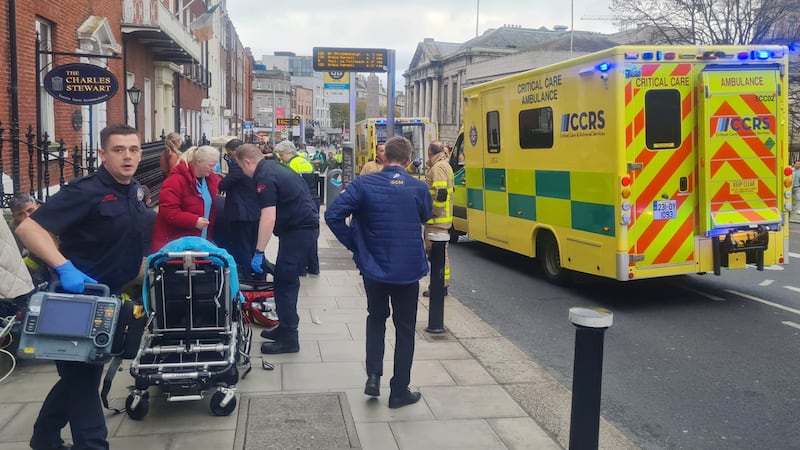Lower rush hour speed limits on Dublin's M50 have been proposed by the National Roads Authority as a way to reduce traffic congestion on the route.
NRA communications manager Sean O’Neill said traffic on the M50 was building to a point where congestion threatened journey times, particularly around the vicinity of the Red Cow junction.
He said one of the options the Government could consider was reducing the speed limit to about 60 km/h which would help offset “the accordion effect”.
This occurs when vehicles on heavily trafficked route brake, causing increasing congestion as vehicles behind brake more severely.
Traffic travelling at slower speeds can avoid this scenario and deliver a better overall level of service and shorter journey times, he said.
The authority also reiterated the option of multi-point tolling on the orbital route as a “demand management measure”.
Multi point tolling would extend the tolling operation from traffic using the West Link bridges, to traffic using other parts of the road, between the M11 and M1. Multi point tolling has potential to considerably increase the €110 million-a-year revenue generated by the M50 toll.
However, this option has been ruled out by Minister for Transport Paschal Donohoe.
Mr Donohoe has said on a number of occasions he prefers pro-active development of public transport, such as Luas cross-city, as a means of reducing traffic on the M50.
Of the €110 million a year revenue generated by the M50 toll, some €50 million is paid to the West-Link bridges’ former owners NTR.
While the traffic increases were explained by the roads authority as evidence of increased economic activity, An Taisce said it exposed wider problems with the Government’s Smarter travel policy.
In an examination of the 2009 to 2020 Smarter Transport Policy, An Taisce said there was a commitment that “the total kilometres travelled by the car fleet in 2020 will not increase significantly from current levels”.
Ian Lumley from An Taisce said the increase in users of the M50 and other motorways appeared to run contrary to the aims of Government’s Smarter Transport policy.
An Taisce also criticised a decision to add two lanes to a 13km section of the M7 between the Newbridge and Naas interchanges.
“This will encourage extra traffic from the Greater Dublin Area and beyond to funnel into the Red Cow junction and M50 and undermine the national modal share targets set out in Smarter Travel” the spokesman said.
According to figures from the NRA traffic increased on all the State’s toll roads in 2014.
On the M1 at Dundalk, the M4 Kilcock/Kinnegad, the M3 Clonee, the N6 Galway and the M8 Fermoy toll roads the increases were as high as 8 per cent.
There was a 20 per cent increase in trucks and lorries using the Dublin Port and Limerick tunnels.
The N25 Waterford bypass showed a 50 per cent increase in trucks and a 13 percent increase in cars and other vehicles using the road since 2010.
The average full year increase across the nine routes was 20 per cent per toll road.
Mr O’Neill said the authority paid €5 million to the operators of the Limerick Port Tunnel in 2014 and €2.4 million to the operators of the M3.
The compensation for low traffic volumes was paid towards the operator’s interest on borrowings, under the complex agreement between the authority and the road builder.











